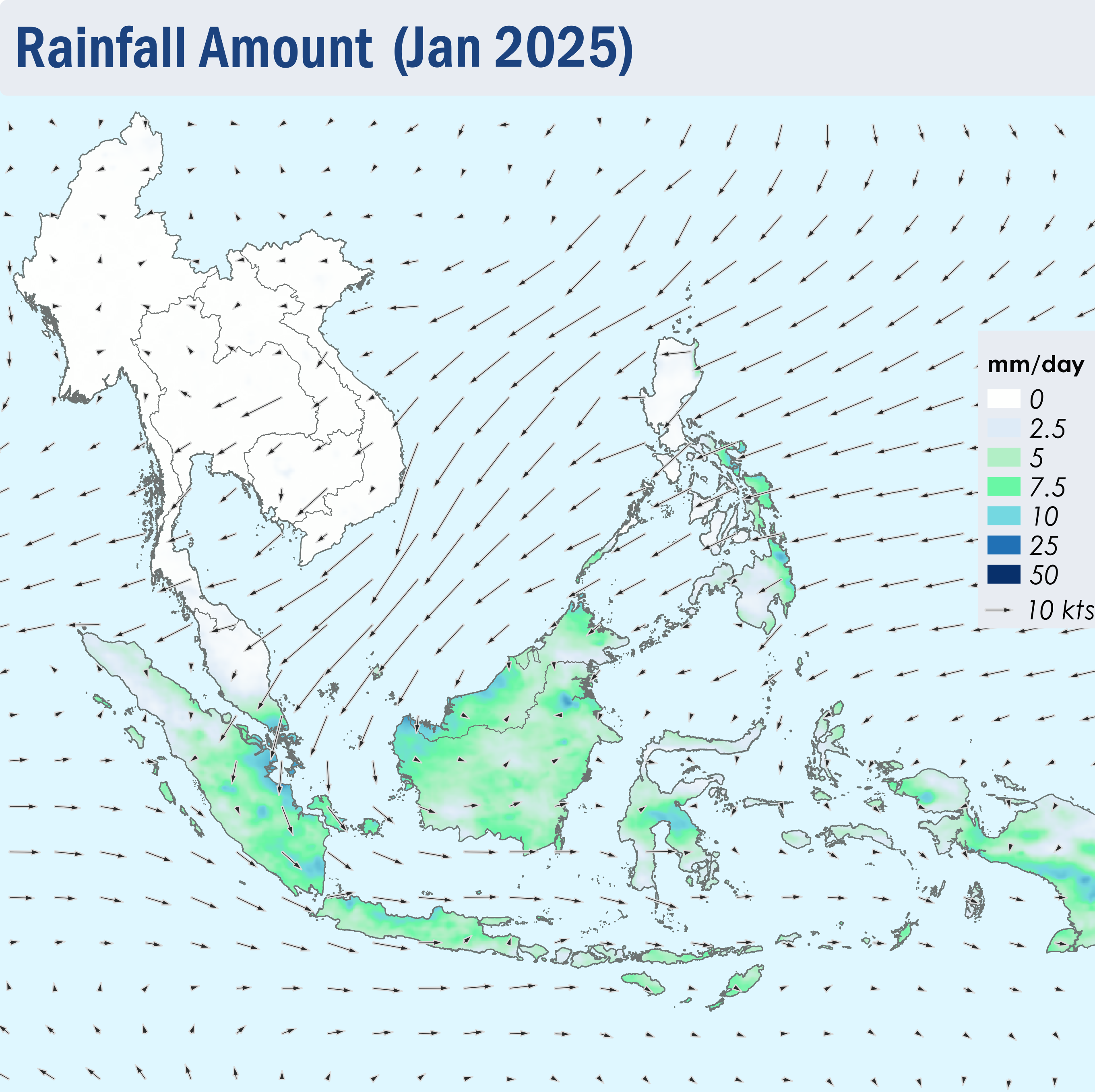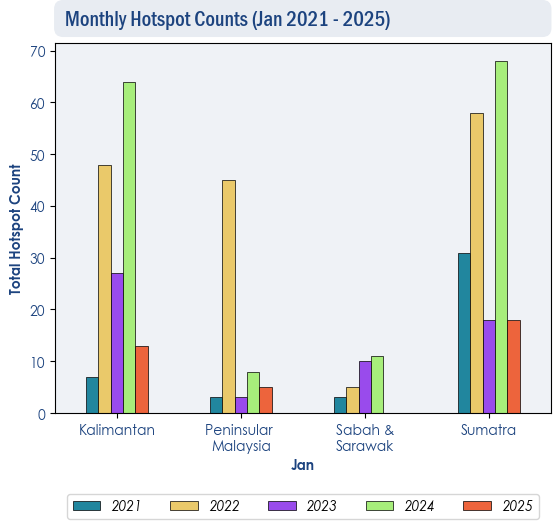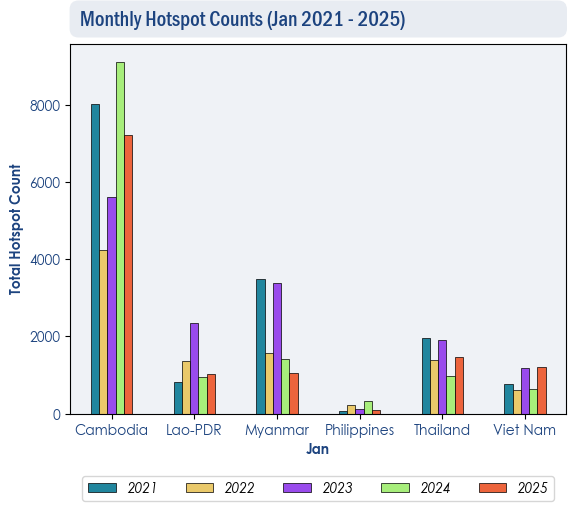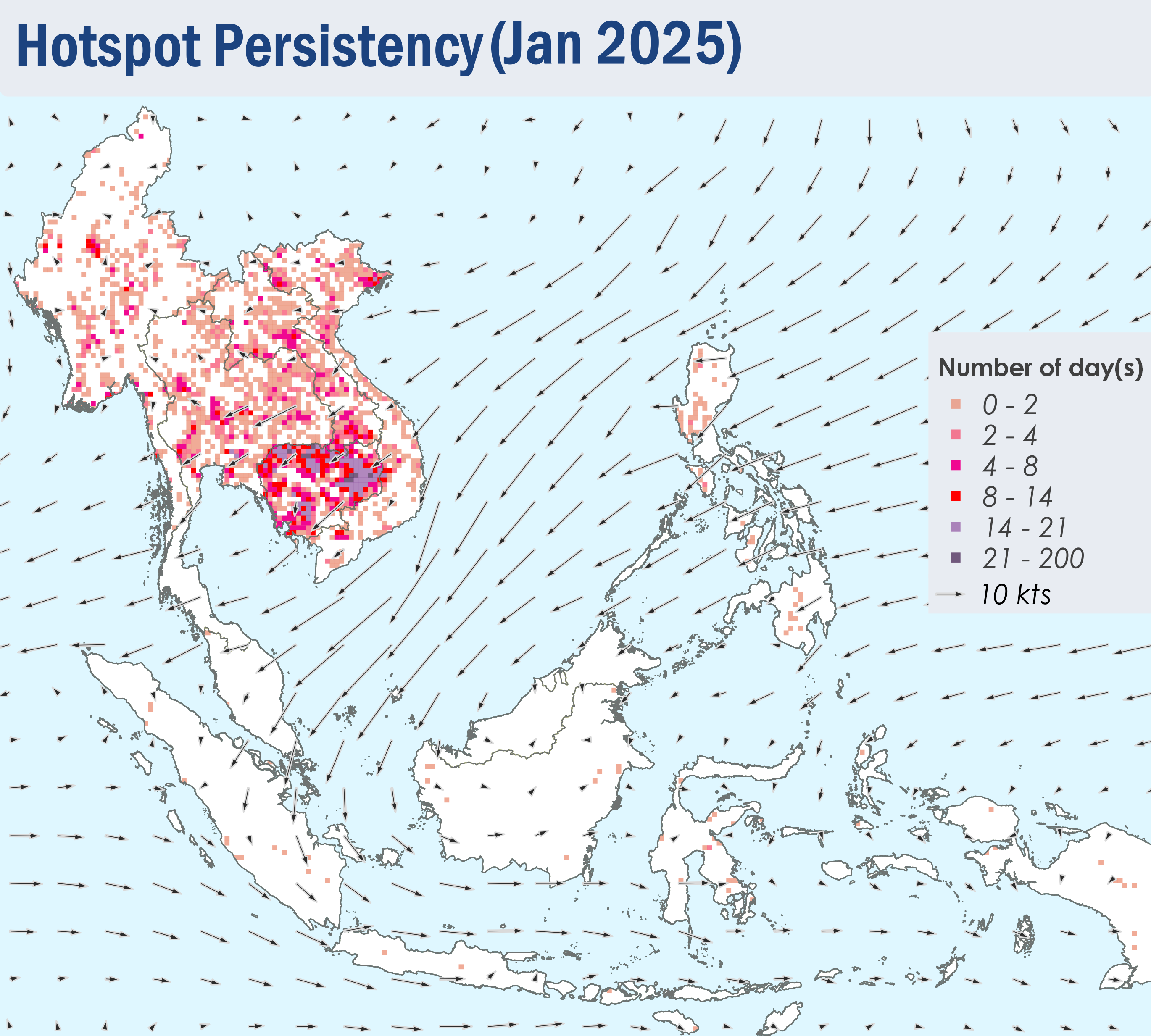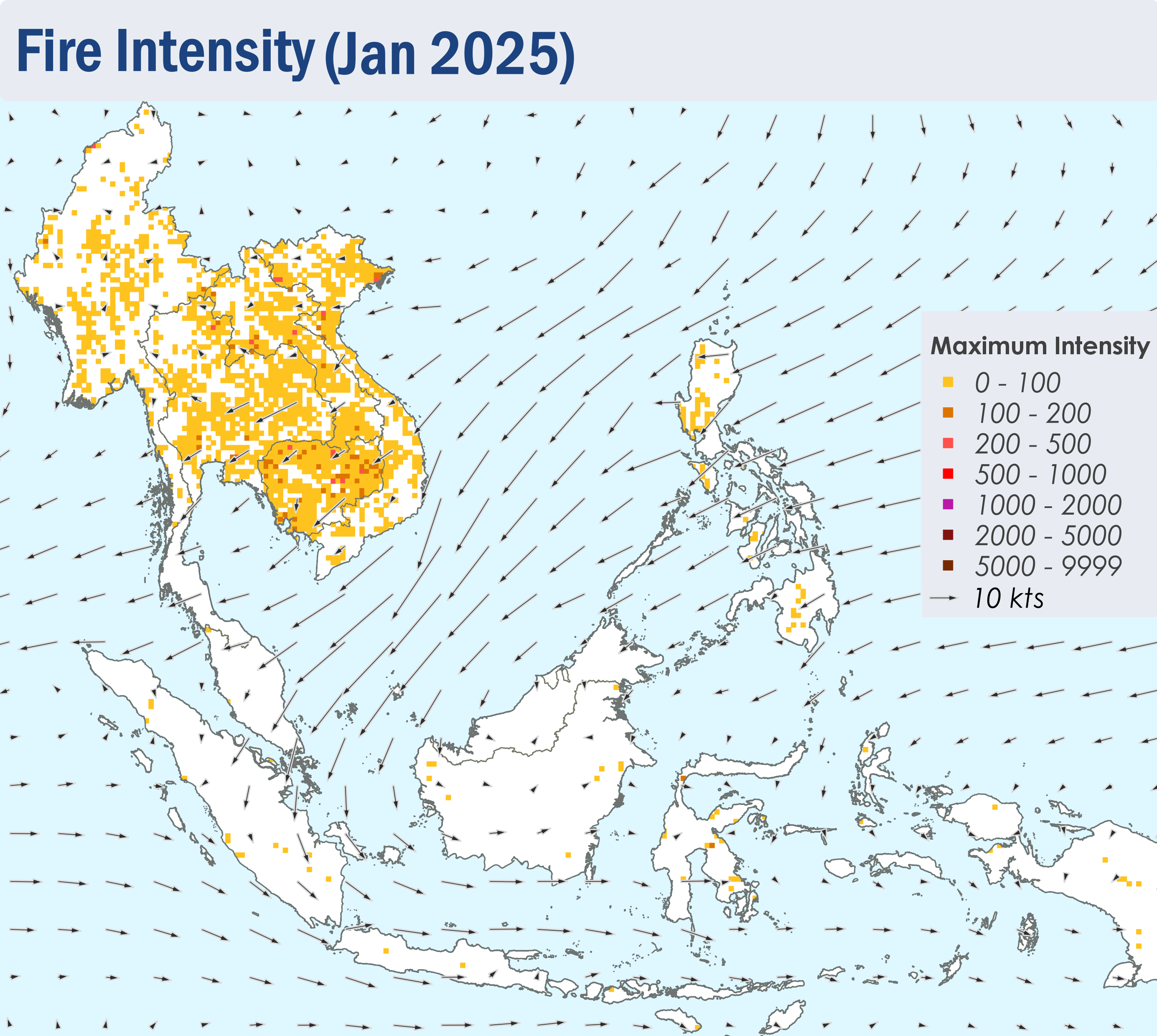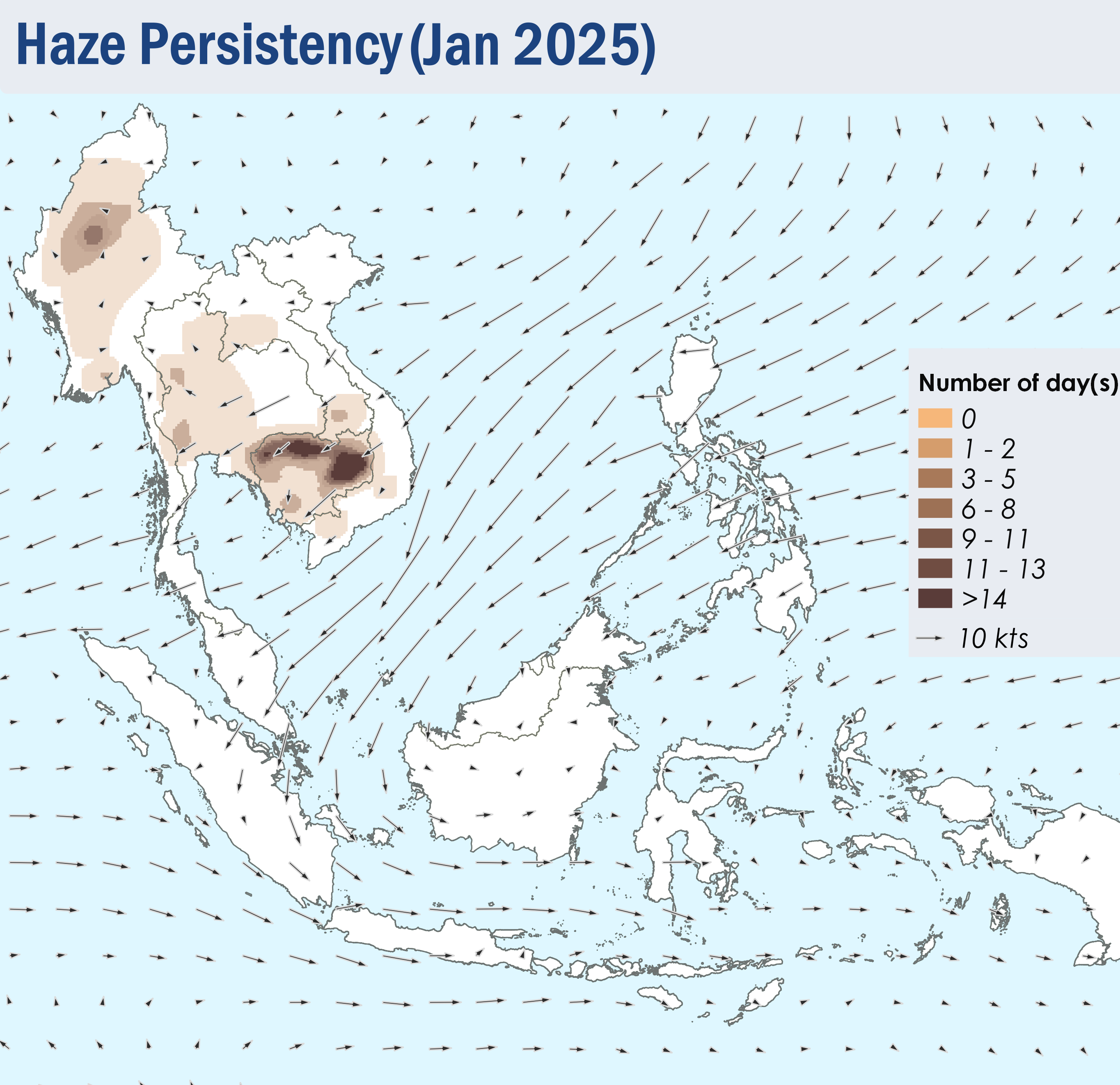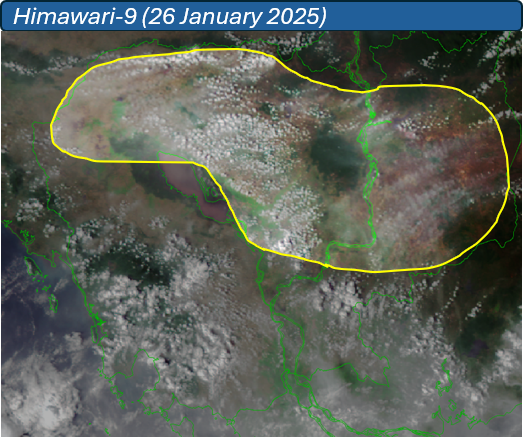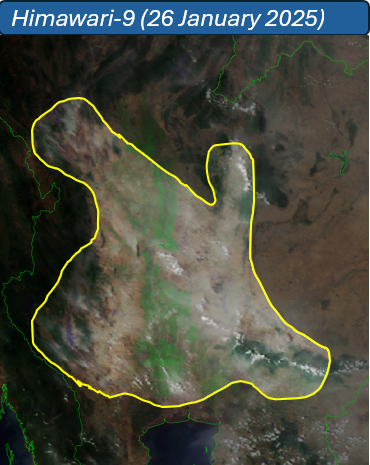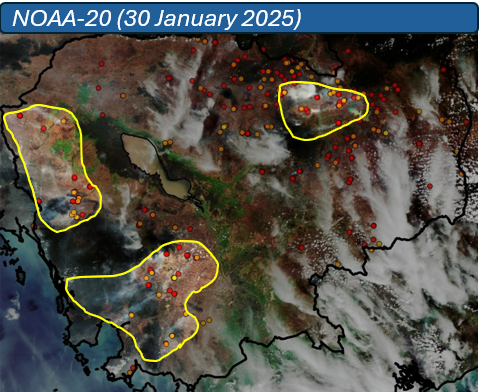Review of Regional Haze Situation for January 2025
1.1 Northeast Monsoon conditions persisted over the ASEAN region in January 2025. During this month, the prevailing low-level winds over regions north of the Equator blew mostly from the northeast or east, except over the northern parts of the Mekong sub-region, where the winds were light and variable in direction. Meanwhile, the prevailing low-level winds over regions south of the Equator blew mainly from the west or northwest (Figure 1).
1.2 As the dry conditions persisted with a gradually increasing number of hotspots since December 2024, Alert Level 1 for the onset of the dry season for the northern ASEAN region was issued on 2 January 2025. Thereafter, under the persisting dry conditions, the hotspot and smoke haze situation over the Mekong sub-region escalated with a heightened risk of transboundary smoke haze occurrence, and Alert Level 2 for the Mekong sub-region was activated on 20 January 2025. Showers were observed elsewhere in the ASEAN region, except for parts of the northern Philippines where there were brief periods of drier weather (Figure 1).
1.3 The overall hotspot counts for the ASEAN region in January 2025 were generally lower than or comparable to hotspot counts recorded for the same period in previous years (Figures 2 and 3).
1.4 Isolated to scattered hotspots were detected in the Mekong sub-region (Figure 4) and the Philippines. Persistent clusters of hotspots, some of which were intense, with moderate to dense smoke plumes were observed consistently in many parts of Cambodia and central Thailand (Figures 4, 6, 7, 8 and 9). Moderate smoke haze was also observed in the northern parts of Thailand, most of Myanmar, as well as the northern and southern parts of Lao PDR (Figures 6, 7 and 8). Towards the end of the month, smoke haze emanating from hotspots detected in the western parts of Cambodia was observed drifting westwards into the central parts of Thailand.


